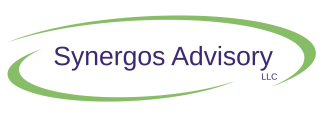
Maximize Your Savings: Backdoor Roth IRA and 401(K) Conversion Strategies
When it comes to retirement savings, most people are familiar with traditional 401(k) plans and IRAs (Individual Retirement Accounts). However, there are two lesser-known options that could significantly increase your retirement savings: the backdoor Roth IRA and the mega backdoor Roth 401(k).
In this article, we'll discuss what these two strategies are, their benefits, and things you should be careful about.
Backdoor Roth IRA
First, let's talk about the backdoor Roth IRA. A Roth IRA is an individual retirement account that allows you to make after-tax contributions, which then grow tax-free and can be withdrawn tax-free in retirement. There are income limits that prevent high earners from contributing directly to a Roth IRA. In 2023, for example, the modified adjusted gross income (MAGI) limit for individuals is $153,000 and $228,000 for married couples filing jointly.
This is where the backdoor Roth IRA comes in. It allows high earners to get around the income limit by contributing to a traditional IRA and then converting it to a Roth IRA. Here's how it works:
- Open a traditional IRA and make a nondeductible contribution. This means you don't get a tax deduction for the contribution.
- Convert the contribution from the traditional IRA to a Roth IRA. Since you already paid taxes on the contribution, there's no additional tax liability on the conversion.
The benefits of a backdoor Roth IRA are clear. You can contribute to a Roth IRA regardless of your income level, and you can enjoy tax-free growth and withdrawals in retirement. However, there are some things to be careful about.
First, you'll want to make sure you don't have any other traditional IRAs with pre-tax contributions. If you do, the conversion will trigger a tax liability based on the pro-rata rule. This means that you'll owe taxes on a portion of the conversion based on the ratio of your pre-tax contributions to your total IRA balance.
Second, you'll want to be careful about the timing of the conversion. If you convert the traditional IRA to a Roth IRA too soon after making the contribution, you could be hit with a penalty. The IRS requires that you wait for a period of time before converting. There is debate in the industry as to whether 30 days or 1 year satisfies the IRS’s requirements. Consult with your financial professional.
Mega Backdoor Roth 401(k)
Now, let's move on to the mega backdoor Roth 401(k). A 401(k) is an employer-sponsored retirement plan that allows employees to make pre-tax and, depending on the employer's plan, after-tax contributions.
The mega backdoor Roth 401(k) allows high earners to contribute after-tax money to their 401(k) plan and then convert it to a Roth 401(k). Here's how it works:
- Contribute the maximum pre-tax amount to your traditional 401(k) plan ($22,500 in 2023 for those under 50 and $30,000 including catch-up contributions for those 50 and over).
- Make after-tax contributions to your 401(k) plan up to the total annual contribution limit (up to $66,000 in 2023 for those under 50 and $73,500 for those 50 and over). Be mindful of employer matches which count towards the total annual contribution.
- Convert the after-tax contributions to a Roth 401(k). Since you already paid taxes on the contributions, there's no additional tax liability on the conversion.
The benefits of a mega backdoor Roth 401(k) are substantial. You can enjoy tax-free growth and withdrawals in retirement. However, there are some things to be careful about.
Not all employers offer the option to make after-tax contributions to a 401(k) plan. You'll want to check with your employer to see if this is an option.
Employers who offer this option may cap the total amount below the maximum because of limitations from discrimination testing which looks at participation rates, and the amount and type of employer matching.
It's worth noting that while both the backdoor Roth IRA and the mega backdoor Roth 401(k) can provide significant benefits for high earners, they're not appropriate for everyone. If you're not a high earner, or if you don't have a significant amount of money to contribute to your retirement savings, these strategies may not be worth pursuing.
The backdoor Roth IRA and mega backdoor Roth 401(k) are powerful strategies that can help high earners maximize their retirement savings. There are some things to be careful about, including the pro-rata rule and the timing of the conversion. If you're interested in pursuing these strategies, it's worth consulting with a financial advisor to make sure these strategies are appropriate for your situation.
With the right planning and execution, these strategies can help you achieve a more comfortable retirement.
This content is developed from sources believed to be providing accurate information. The information provided is not written or intended as tax or legal advice and may not be relied on for purposes of avoiding any Federal or state tax penalties. Individuals are encouraged to seek advice from their own tax or legal counsel. Individuals involved in the estate planning process should work with an estate planning team, including their own personal legal or tax counsel. Neither the information presented nor any opinion expressed constitutes a representation by us of a specific investment or the purchase or sale of any securities. Asset allocation and diversification do not ensure a profit or protect against loss in declining markets.

